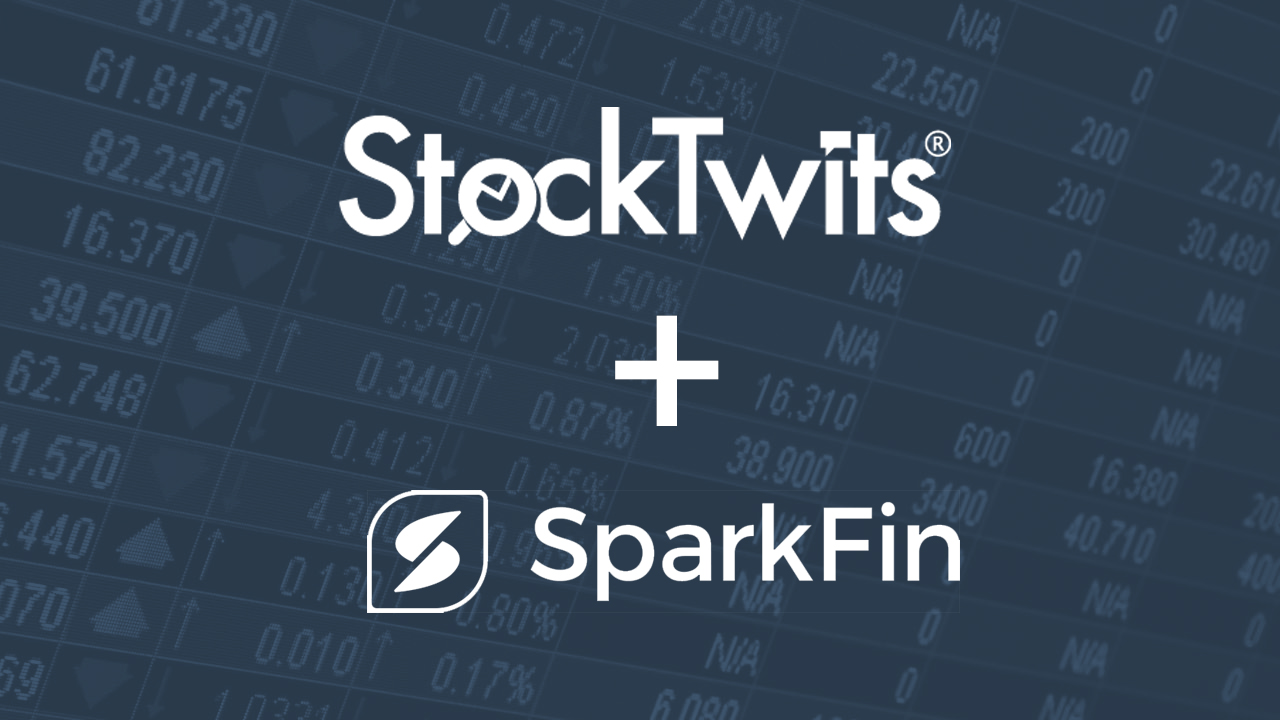Winning investment strategies from the frontlines of the blogosphere – with Tadas Viskanta
Tadas Viskanta has been at the forefront of the next generation of financial content for years.

His Abnormal Returns blog is the place investors — ravenous for the day’s most impactful news and analysis — start every trading day.
Tadas is out with a new book that really is a culmination of 9 years of work, scouring the Internet for the best and most interesting trading strategies and technologies.
Tadas joins us for to talk about his work on this week’s episode of Tradestreaming Radio.
Listen to the FULL Episode
The real reason investing clubs are drying up (and what we should do about it)
Like radio stations that play the Flock of Seagulls and barbers who know — really know — how to cut the high fade, investing clubs are quickly disappearing.
But is that a bad thing?
According to a recent Reuters article, there are only about 5500 investment clubs in the U.S., down from 60,000 during the tech bubble.
“Oh, the numbers are definitely down,” says Adam Ritt, communications director for BetterInvesting, the Madison Heights, Michigan-based investors’ association whose members include clubs around the country. “It’s been a steady trend downward for a long time.”
The article hypothesizes about the reasons for the investment club’s demise, citing poor stock market returns, online investment research, and less money around to invest.
But these aren’t the real reasons investment clubs are disappearing.
Continue reading “The real reason investing clubs are drying up (and what we should do about it)”
Stock Twits, Estimize, and the future of social investing – with Leigh Drogen
Leigh Drogen played an integral role in StockTwits‘ success. Now, he’s on to his own startup, Estimize, which takes aim at improving financial estimates with a decidedly social approach.
Drogen shares his own experience and history as an investor and now entrepreneur as he’s one of the most vocal proponents of using a mix of social media communications to enhance the investing process.
He’ll share his vision of social investing and how Estimize should help investors become more accurate.
Continue reading “Stock Twits, Estimize, and the future of social investing – with Leigh Drogen”
Investing: Being in it to win it
We’re looking at new schools for my soon-to-be high schooler son.
As parents, we’ve made so many mistakes, learning and futzing things up as we go.
I’m not the same parent as I was 13 years ago.
Investing as learning process

Investing isn’t an activity — it’s a process.
Tradestreaming is all about learning from — and sharing — what we’ve experienced.
From my interview earlier this week with Jonathan Clements (author of The Little Book of Main Street Money and previously the personal finance columnist for the Wall Street Journal)):
A lot of what it takes to become a good investor and a good manager of your money is just time. Think about people’s learning curve — in some sense we don’t really get an opportunity to become experts in money management unless we really put our minds to it. Most of us will only buy 2 or 3 or 4 homes during the course of our lives — we never really get the chance to become experts at that. So, there’s a good chance that we’re going to mess up.
Similarly, we only get to claim Social Security once, so in terms of when to claim Social Security, there’s a good chance, we’re going to mess up royally.
And similarly when it comes to investing, yeah, we’re going to get the chance to see a lot more bull and bear markets than we would opportunities to buy homes. Nonetheless, the chance to mess up is enormous in part because people have to cope with all this noise.
4 ways to accelerate your investment experience
- Nothing beats experience like experience: you just have to be in it to win it. That means ensuring your take adequate precautions to maintain your ability to stay invested. The research shows it’s not about age, it’s about experience and time in the market.
- Log your experiences: Keep a trading diary. Better yet, blog about what you’re doing, sharing your activities with others on Seeking Alpha or on StockTwits. You’ll get feedback from others — helping to expedite your learning and climbing the learning curve.
- Plug into the tradestream: Use the Internet, the blogosphere, and twitter to identify top performers interested in sharing their knowledge. If you’re interested in making sure results are what they claim to be, follow top performers on Covestor who have agreed to have their performance audited.
- Listen/watch the best investing podcasts: I’ve compiled a list of what I think are the best investing podcasts on iTunes. But there are many more great ones. I interview a lot of these experts on Tradestreaming Radio, too. StockTwits TV in general and Abnormal Returns TV (from Abnormal Returns) are also great for access to true experts in their domains.
I’m sending my kid to high school. Like James Altucher, I don’t know if I’ll send him to college. There is so much information readily available to investors, you can get a degree in hard knocks if your’re diligent and interested.
You just have to plug into the Tradestream.
StockTwits growing, hiring, and portalizing
Realtime platform for stock traders to share info, StockTwits has just hired David Putnam, previously head of 800lb gorilla that is Yahoo Finance. Howard Lindzon’s firm continues to just chug along, growing traffic, rolling out products and now, recruiting seriously for growth.
According to TechCrunch:
According to Quantcast, 465,000 people are now visiting the site per month, which means the company has more than doubled its visitors since early December, when less than 200,000 were checking in to share and trade. This seems largely due to the service’s continuing evolution beyond its TweetDeck roots and creation of its own true investor ecosystem chalk full of video, news and charts — all enabled by an AIR app.
StockTwits has been pushing on a couple of fronts which should interest investors:
- investor relations: The firm is serious about attracting IR business, announcing the hiring of Chris Bullock as VP of Corporate Services.
- monetization engine: Watching the evolution of Seeking Alpha’s App Store closely, ST has rolled out its own marketplace for data products.
- portalize: This is something Putnam knows well from Yahoo but Yahoo made a massive site on curating essential information investors need. ST is growing traffic by syndicating its own content. Look for ST to become more of a destination site investor head to for more of the investment/research process.
Source:
StockTwits continues to expand, steals VP David Putnam from Yahoo Finance (TechCrunch)
StockTwit’s Lindzon pitching co hard on Bloomberg TV
CEO of StockTwits, Howard Lindzon was on Bloomberg TV yesterday talking about alternative energy companies, Japan and how StockTwits’ contextual engine is helping investors curate information that’s important to them.
Interesting quote:
Twitter is about volume and real time, reach and everywhere…StockTwits is about curation, depth
Realtime trading data in the collective tradestream is HUGE
Softly launched a month ago, Yahoo Finance’s Market Pulse is actually a huge f’in deal. Clearly, the press — and investors — hasn’t really understood what’s going on here. And I’m not talking about StockTwits’ inclusion in the real-time stream (there are only two sources of data right now). What’s really huge here is the Covestor feed that’s showing up on stocks.
Market Pulse is a real-time feed — much like Twitter is — on specific stocks. So, whenever a trader or investor tweets or writes about a stock, it shows up here. So, everytime someone blabs about $AAPL on StockTwits, investors can follow that stream alongside the other data provided on Yahoo Finance. Is that interesting? Maybe. It is part of the real time conversation and important for hyperactive traders, I guess.
But the big deal here is what Covestor is supplying to Yahoo Finance users. As a marketplace for investment services, Covestor actually validates/verifies trading activity of its managers. In turn, Covestor supplies Yahoo’s Market Pulse with a real-time stream of trading activity — real live trades with real money behind them. Users get a feel for how large a portfolio position is (in percentage basis) and whether the investor is building or liquidating a position. Where else can you find this in real time? Nowhere.
This is all about the power of the collective tradestream. This takes everything to a whole new level.
This is a BIG deal.
Chart.ly’s new beta screencasting tool enables analysts to up their games
Investors and Google Buzz: a threat to StockTwits?
With much fanfare yesterday (they even arranged a blizzard for much of the  U.S.), Google announced its social media offering, Google Buzz (see video below).
U.S.), Google announced its social media offering, Google Buzz (see video below).
What is Google Buzz
So, what is Buzz? I like Matthew Ingram’s description on GigaOm of the Google Buzz service:
Google’s new service looks and feels a lot like many other social media tools and networks. The primary input is a box for status updates, just like Twitter and Facebook. You can use @ replies, just like Twitter, and you can share photos and other media content easily (there’s even a photo gallery function like Facebook’s). If you’re mobile, you can give Google Buzz your current location and get comments about that location, just like Foursquare and Gowalla and Yelp. But the single biggest difference between Google Buzz and all of these other services is that Buzz is tied to email.
I think what’s interesting here is that it looks like a take on Twitter and Facebook that will allow more intellectual collaboration. And by that, I mean an ongoing, multimedia, conversation centered around specific content.
How Investors use Social Media
Beyond the back-and-forth whether Google Buzz is a big hit or flop, I began thinking how investors could use this service. When I do this (it’s a messy process, sorry), I tend to use the New Rules of Investing framework. Investors using social media tend to piggyback gurus (cloning super investors’ portfolios a la AlphaClone), crowdsource ideas (like Piqqem), participate in expert communities (like Covestor and kaChing), and use new technologies to better screen for investments.
StockTwits: What it does
We all know of the initial successes of StockTwits — it’s a good service, run by competent, thoughtful people and has created a pretty loyal (can I say, rabid?) following of users. Built on Twitter, StockTwits layers in functionality specific to traders and investors (they’ve even skinned their own Twitter software client).
StockTwits users are plugging into what I call (in my upcoming book) the Tradestream: online investors’ publicly available trading logs, complete with their thoughts and theses behind the trades and market conditions. These are short thoughts, 140 characters or less in length, and typically stand alone. It’s hard for someone participating in a conversation — let alone, someone who is merely a spectator of one — to group together thoughts into a cohesive conversation (think of how Gmail deals with emails/chats as part of a discussion).
How Google Buzz improves on Twitter/StockTwits
Google Buzz changes this. Buzz groups thoughts, however errant or short, together into an ongoing discussion. For example, assume someone posted their thesis on whether Google (GOOG) is a long or short candidate. In yesterday’s pre-buzz world, an investors would use StockTwits’ Twitter client and post, “Thinking Google’s a long here. Any thoughts?”. This would be followed by a string of responses over the next few minutes and trickling in over the next couple of hours. To view this unfurling chat, users could check the StockTwits Google Page online or access this data through a Twitter client.
But, and here’s the thing, there is nothing cohesive pulling these scattered thoughts into a conversation to help me make a decision regarding GOOG. Of course, I can scan the output — the tradestream — and piece it together myself. The power of the conversation is lost on Twitter and instead turns the stock research process into an incessant deluge of sound bites. That process of vetting ideas is especially important to investors. This is not a ding on StockTwits as much as its the product of how Twitter works.
Google Buzz changes this. And more, it inserts the tradestream into my email client, where I’m already spending my time — not a game changer, it just enables me to close one more window.
Is this something StockTwits can address? Surely. Howard Lindzon and team understand what investors/traders are looking for and are rolling out tons of functionality (have you seen StockTwits TV? Loving it, actually). It’s this focus on the investor/trader/analyst that will continue to trump Google’s more general efforts in this space.
Thoughts?









